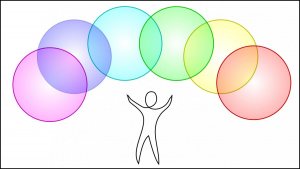Origins Modern Energy - Forbidden Science with Silvia HartmannWhere did Modern Energy come from? Find out in this short excerpt from the 2017 GoE Trainer's Training.
Modern Energy has its origin in Silvia Hartmann's research into the cause for Rage Syndrome in domesticated animals. She discovered that social mammals (at least) exchange an "invisible something" that drives their behaviour and their emotions. People are social mammals too. Her original research was repressed and never published. She went on to create the foundations of Modern Energy based on the structural information about how mammals work. Find the principles of Modern Energy explained at GoE.ac/discover #forbiddenscience #scientificheresy #forbiddenknowledge #modernenergy
Oct 18, 2018
Transcript:Would you like to hear the story of Modern Energy? This is my story. The story of Modern Energy really gets started in about 1987 when I was doing animal behaviour research to find the cause for Rage syndrome in domesticated animals. Rage syndrome is when a dog, horse, dolphin or even a killer whale goes from being quite stressed all of a sudden goes into an explosive rage and will attack bystanders. It doesn't matter if they're friend or foe, or even their own children. It doesn't matter. The animal goes absolutely mad and that was called rage syndrome. I thought that is what I was supposed to do as a part of this research group, to find the cause for rage syndrome. My past aspects were unfortunately naive. I am still naive to this day; I thought that's what we were supposed to do. Actually, later on I learned that this study had been sponsored by a dog food company which were selling through veterinary surgeries. They wanted proof that their dog food alleviated behaviour problems. I didn't realise this. I was told that our research brief was to find the course for rage syndrome. So I went to work and I found it. Rage syndrome is the end of an escalation chain in social mammals when they don't get enough attention. So I like to do this demonstration: I'm going to turn get your attention and it's your job to ignore me. So it seems that social mammals like dogs, dolphins, horses, cows, monkeys, apes, rats, mice... that they exchange an invisible something between themselves that is extremely important. As important as food and water is to their mental, emotional and physical well-being. [Adrienne joins Silvia to demonstrate rage escalation] So I'm a social mammal and she's a social mammal. I'm wandering along, I'm eating my grapes I'm picking. I'm thinking to myself I need some attention. So where can I get some attention? [Adrienne ignores Silvia] Oh, over there is a member of my species. So I start by looking at her. But she's not looking back. That's step 1. I'm looking for someone to give me that energy that I felt I need. So I'm now escalating my behaviour to try and get her attention. "Yoo hoo! Hello! Good morning! How are you today?!" So now I'm going to decrease the distance. [Adrienne moves away] No, Adrienne stand perfectly still. Don't avoid me. Avoidance behaviour is still a response. You are showing me through avoidance that you are aware I am here, but just don't want to talk to me. That's not the same thing. Ignore me like I don't even exist. [Adrienne goes back to ignoring Silvia] "Hey! Hey! FFS! What is the matter with you?" Can you see how this is escalating into physical violence? So now you have me in prison. She's dead. The kids are crying. But now what we're going to do is intervene in this escalation chain early. So I'm going back to where I was, I'm going to try and get your attention and you're going to give it to me briefly. I need some attention. I'm going to go over to her. [Adrienne looks at Silvia briefly] There we go, that's what ends the escalation chain. All those things don't happen now. The screaming, the waving, the coming closer, the attacking... For just one look at the right moment. [Adrienne leaves stage] So this is the escalation chain of energy interaction between social mammals and my young aspect wrote this up in a thesis called "The Harmony Program" which explained this escalation chain. She then went on to propose ways in which to improve behaviour, such as giving attention to those who are asking for it. That is heresy. "People who seek attention are bad. They are weak. They are feeble. They must be punished. Her suicide attempt is just a cry for attention." They also say: "Seeking attention is a bad thing." Well you might as well say that seeking food and drink is a bad thing. Because this stress of low attention and low energy from other social mammals causes extreme health and behaviour problems, and mental mailfunctions. So my little aspect back in 1993 who wrote the Harmony Program proposed the astonishing theory to break these escalation chains by giving attention early. So I setup my own research program and we gave animals attention. These were severely problem riddled animals. They got better. But then something tremendous happened. If you continue to give positive energy even though the animals are already behaving well, a weird threshold shift comes into being and you're already starting to deal with a totally different animal. We had discovered the positive wing of the SUE Scale. We were astonished. When you continue to give positive attention the animal changes and it becomes a different version of itself. It learns more easily, it remembers better, it becomes more social. It actively tries to help you. It actively tries to solve problems. It's intelligence increases and it's health problems decreases. There came a time when I kind of thought people should know this. So why did it take 30 years to get here? Well, we're really dealing with new territory which is why we call it "Modern Energy". It is not based on the Quran, it's not based on Buddhism, it is not based on the Bible and it's not based on any Chinese Whispers from the ages. Modern Energy is the direct outcome of a German researcher working in England to discover the cause for rage syndrome. That's where it comes from. Silvia Hartmann, 2017 |
|

These websites are provided to all professional members of the Guild of Energists (GoE). The GoE is the worlds largest modern energy organisation and supports techniques such as Modern Energy Tapping, Energy EFT and EMO. To find out more about the GoE and how to join see:
📰 Updates From The Guild of Energists
💛 Subscribe | 💛 Donate | 💛 Contact
Guild of Energists Ltd is a not-for-profit company t/a The GoE | © Guild of Energists Ltd 2026

 0" is a Biological Necessity" alt="Agency Is The Bedrock of Sanity: Why "Hope > 0" is a Biological Necessity" class="dc-image-thumb">
0" is a Biological Necessity" alt="Agency Is The Bedrock of Sanity: Why "Hope > 0" is a Biological Necessity" class="dc-image-thumb">


